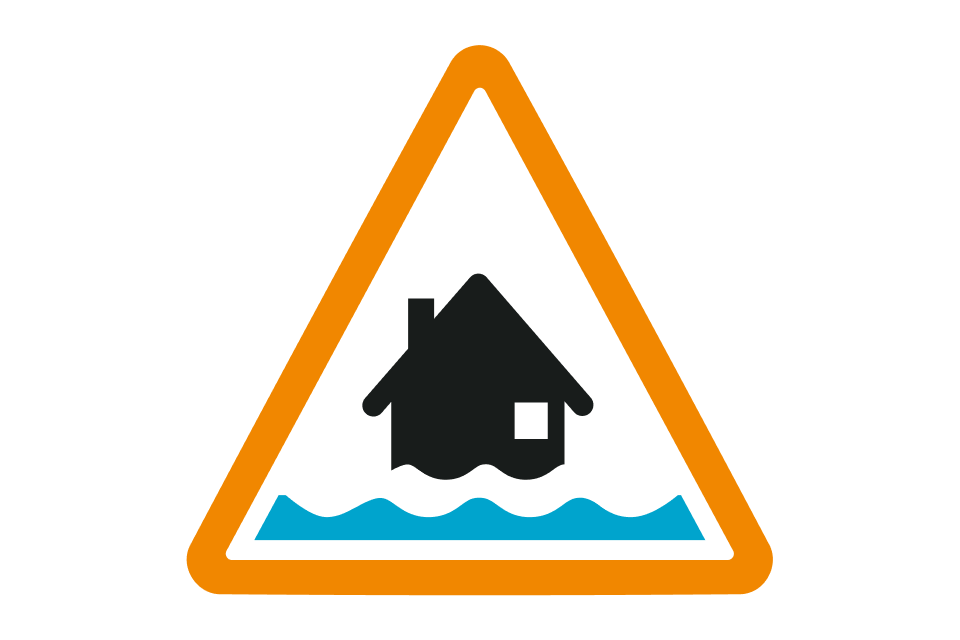Flood alerts and warnings: what they are and what to do
What flood alerts and flood warnings mean and what you should do when they're issued.
Applies to England
In England, the Environment Agency provides 3 types of flood warning:
- flood alert – flooding is possible
- flood warning – flooding is expected
- severe flood warning – flooding could be a risk to life and significant disruption to communities
Severe flood warnings can be issued before, during or after flooding.
You should take flood warnings very seriously. The action you need to take is different for each type.
Check flood alerts and warnings in your area
It’s important to check the risk of flooding in your area. Flooding can happen even if you don’t live or work near a river or the sea.
You can:
- check for flooding in the next 5 days
- sign up for flood warnings by phone, text or email
- check your long-term flood risk from rivers, the sea, surface water, reservoirs and groundwater (where data is available)
You can also check the Met Office and sign up for weather warnings across the UK
Create a personal flood plan
If you live in a flood risk area, you should create a personal flood plan in case a flood happens.
Flood alert
A flood alert means that flooding is possible so you should prepare now.

Flood alert icon description: a black house with 1 wavy line of water covering the bottom of it, within an orange triangle.
The Environment Agency issues a flood alert when forecasts show that flooding may be possible from:
- rivers
- high tides, surges or strong winds at sea
Timeframe
The Environment Agency usually issues a flood alert between 2 and 12 hours before flooding. Flood alerts are usually issued during waking hours where possible.
What you should do
You should regularly check if there’s a flood alert for your area and follow the official advice.
If a flood alert is issued, you should:
- be ready to follow your flood plan
- have insurance documents and any medications ready
- avoid walking, cycling or driving through any flood water
- move any livestock and farming equipment away from areas likely to flood
Find out more about what to do during a flood.
Get help from Floodline
You can contact Floodline for advice.
What is at risk during a flood alert
The following can be at risk when a flood alert is in force:
- fields, recreational land and carparks
- minor roads
- farmland
- coastal areas affected by spray or waves overtopping
Flood warning
A flood warning means that flooding is expected so you should act now.

Flood warning icon description: a black house with 2 wavy lines of water covering the bottom of it, within a red triangle.
The Environment Agency issues a flood warning when forecasts show that flooding is expected from:
- rivers
- heavy rain that will cause rivers to flash flood
- high tides and surges coupled with strong winds at sea
Timeframe
The Environment Agency usually issues a flood warning 30 minutes to 2 hours before flooding.
What you should do
You should regularly check if there’s a flood warning for your area and follow the official advice.
If a warning is issued, you should:
- protect yourself and your loved ones
- move your loved ones, pets and valuables to a safe place
- move to higher ground or the upper floor of a building
- turn off the gas, electricity and water in your home if it’s safe
- put flood protection equipment in place
- do as the emergency services tell you
- help others if it’s safe to do so
Find out more about what to do during a flood.
Get help from Floodline
You can contact Floodline for advice.
What is at risk during a flood warning
The following can be at risk when a flood warning is in force:
- homes and businesses
- railway lines and infrastructure
- roads
- coastal areas affected by spray or waves overtopping
- flood plains, including caravans park and campsites
- major tourist and leisure attractions
Severe flood warning
A severe flood warning means that flooding could cause danger to life and significant disruption to communities. You must act now.

Severe flood warning icon description: a red house with 3 wavy lines of water covering the bottom of it, within a red triangle.
Timeframe
The Environment Agency issues a severe flood warning when flooding threatens life and communities.
What you should do
You should regularly check if there’s a severe flood warning for your area and follow the official advice.
If a severe warning is issued, you should:
- stay in a safe place
- be ready to evacuate your home
- do as the emergency services tell you
- call 999 if you are in immediate danger
- if you are caught in a flash flood move to higher ground or the upper floor of a building if it’s safe
Find out more about what to do during a flood.
Get help from Floodline
You can contact Floodline for advice.
What may happen when a severe flood warning is in force
The following may happen during a severe flood warning:
- deep and fast-flowing water
- dangerous debris in the water
- buildings collapsing or at risk of collapsing
- communities unable to escape
- infrastructure not working, like gas, electricity and water
- the evacuation of lots of people
Get more help and information from Floodline
You can contact Floodline for advice:
Floodline
Telephone: 0345 988 1188
Textphone: 0345 602 6340
24-hour service
Find out about call charges